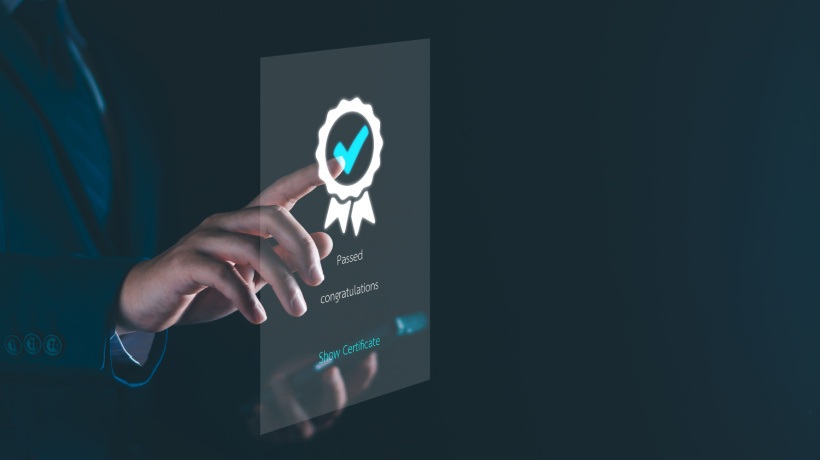Using Blockchain Technology In eLearning
A brief abstract about blockchain: In general blockchain is a list of records, which can be continuously enhanced with more records. These records, so called blocks, are linked together like a chain by cryptographic technologies. That's why this technology is called blockchain. Each block includes a secured hash which links to the previous block, the data of the transaction and the timestamp.
The blockchain is not stored on a single central server. It is deposited on many different computers, so called nodes, and will permanently be updated. This storage method ensures that verification of the information is possible at any time. Also the manipulation of data is very difficult. For manipulation of a record at least 51% of all nodes which store these information need to be changed. Only in this case the verification of that manipulated record will be successful and it will be tagged as correct.
The most well-known use of this technology are cryptocurrencies. Above all, the bitcoin.
Now, how can this technology be used for digital learning?
Blockchain In Digital Learning: A Scenario
If you are just up to short-term profit, you can do it like the guys from the Long Island Iced Tea Corporation. They just renamed their company to Long Blockchain Corp. which increased their stock exchange value by 500%. Currently the company decided to implement blockchain technologies in the near future, however, this shows how ridiculous it ended up. For a useful and long-term usage of the blockchain technology in eLearning, there is a need for a more sustainable approach.
First, we need to identify the stakeholders. The relevant stakeholders for an implementation in eLearning are the learners, eLearning providers, and employers. Since the benefits of the blockchain are transparency and verification of the records, the most useful application in eLearning would be managing qualifications.
In this example, the process starts as soon as a learner participates in a course. After finishing the course a new block is created, which includes the result of the learner, the information about the course in which he participated, and the timestamp when the course was finished. The result could also be a certificate if the course was completed successfully.
- Learners:
They get verification of achieved qualifications by the blockchain. They can also see and manage their qualifications online or store them on a secure device. Even sharing the qualifications with potential employers or universities would be possible. In that case, they don’t need to send everything paper-based or digitalize all their qualification documents. In addition, the problem with missing translations of the documents can be avoided, as the information in the blockchain would be multilingual. - eLearning providers:
They have direct access to the records of the learner and can check if he meets pre-requisites for progression to other qualification levels. Information could also be used to recommend similar courses to the learner. Of course, here a universal classification catalog needs to be implemented first so that all the qualifications are comparable between different eLearning providers. - Potential employers:
They have access to these records as well, and can be certain that learner's qualifications are validated. In addition employers can check if a qualification of an employee expires. In that case an automatic process can be implemented which checks the qualifications from all employees of the company permanently. If a qualification is expired, the employee could directly be registered for a course to achieve the necessary qualification again. Furthermore his line manager or the HR department gets automatically informed about this issue.
Further Developments For eLearning
Obviously, this is just one application scenario for the usage of blockchain in the eLearning sector. There are many more possibilities like the usage for paying eLearning content, the verification of trainings that are relevant for compliance, or the representation of lifelong learning inside the blockchain.
Furthermore, there are additional developments like smart contracts that can also be used to develop another application scenario. In the near future this technology will develop to new application areas and use cases. Therefore, further analysis is needed.









